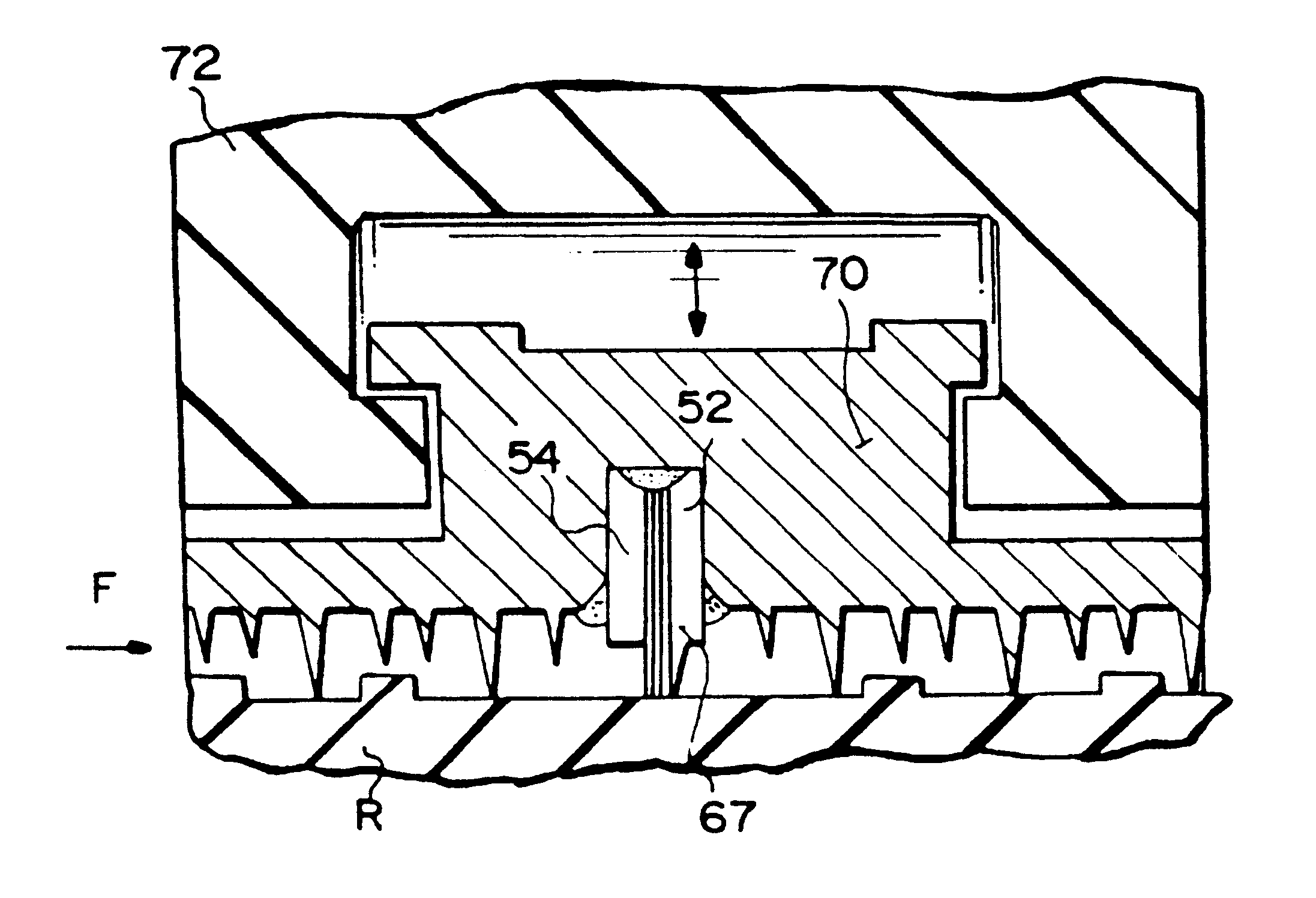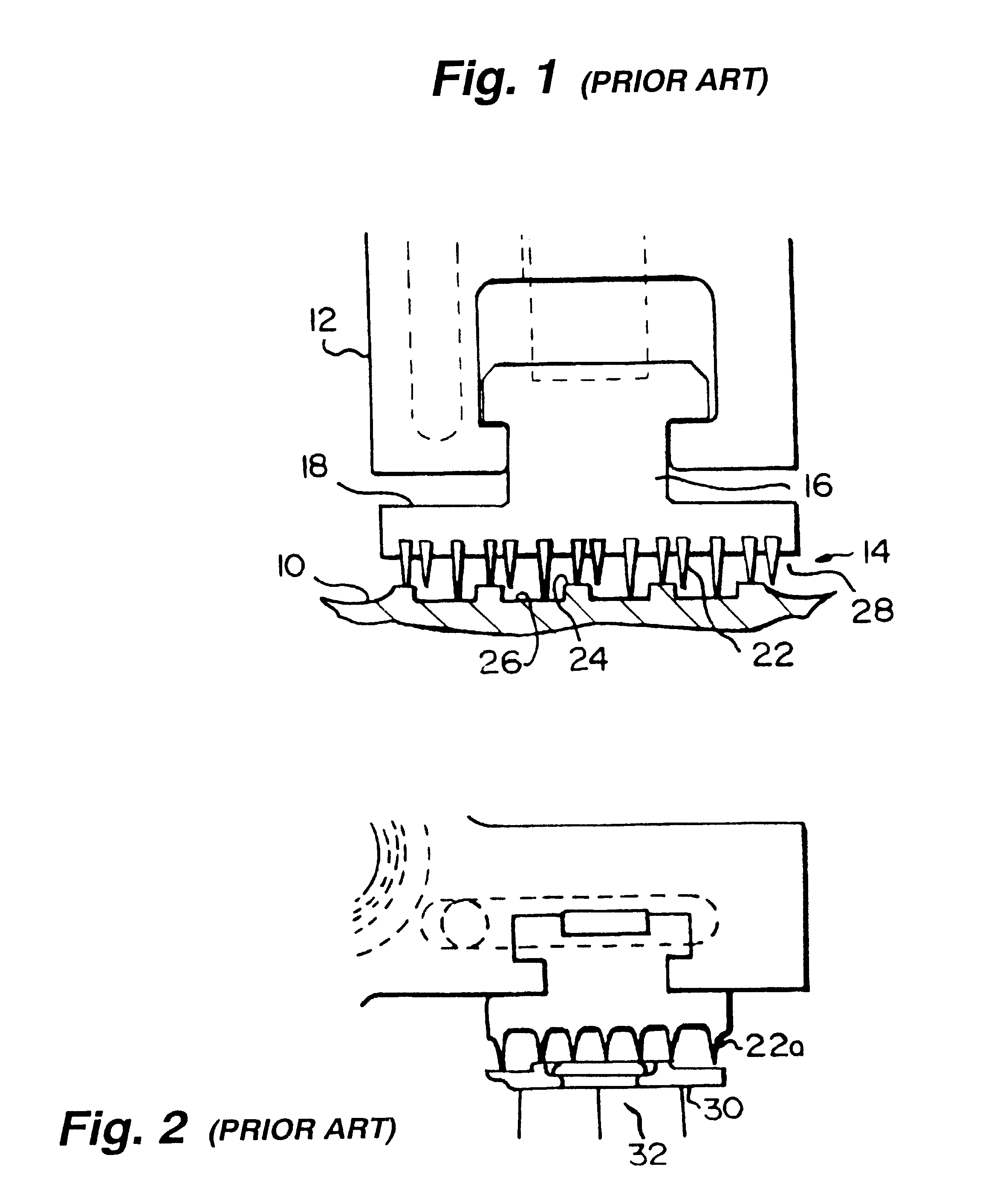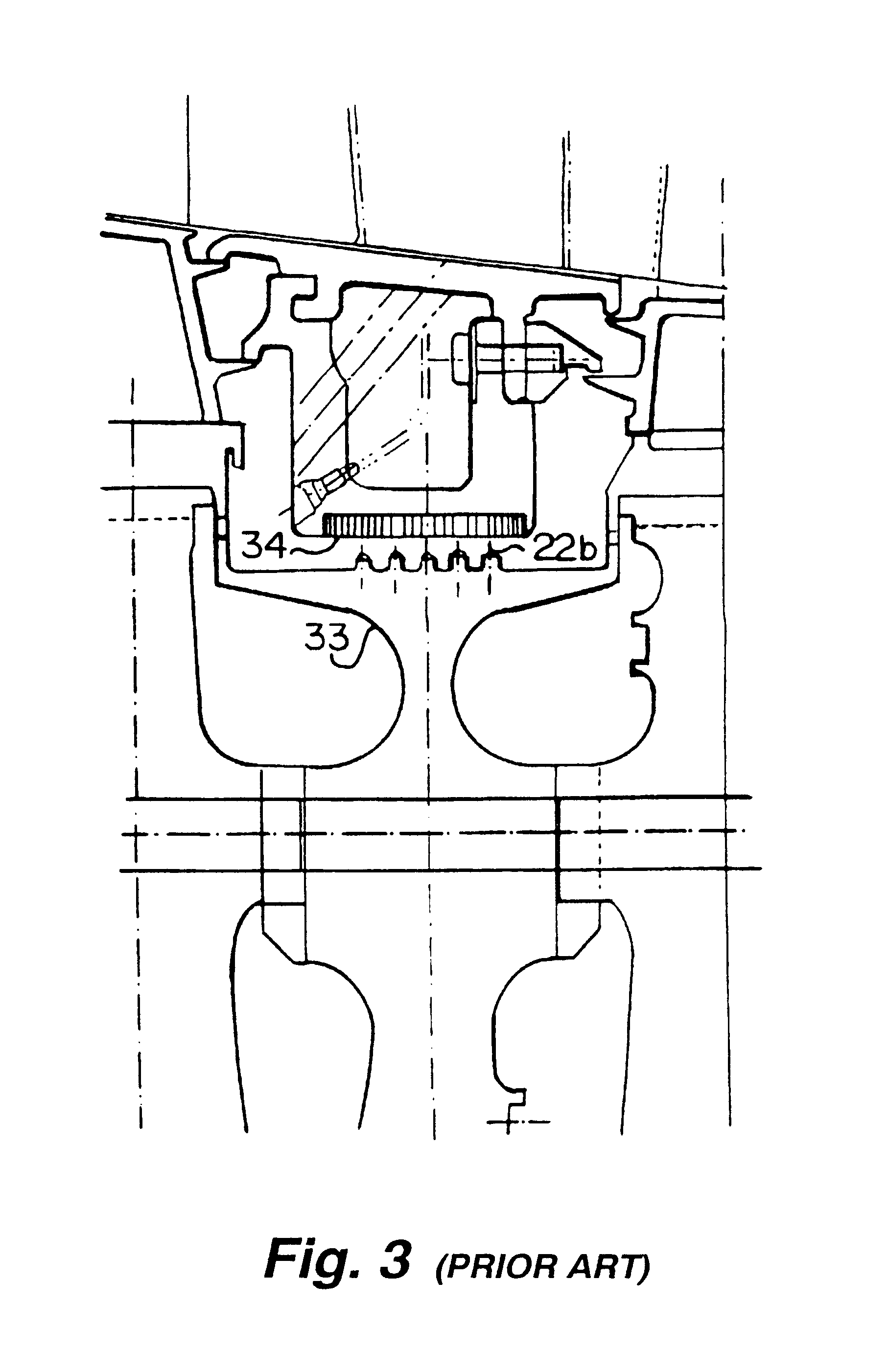Combined brush seal and labyrinth seal segment for rotary machines
a technology of labyrinth seal and brush seal, which is applied in the direction of engine seal, machine/engine, stators, etc., can solve the problems of increasing wear and inability to accommodate radial excursions of shafts, and achieves general applicability to rotary machines, improved sealing, and increased turbine efficiency
- Summary
- Abstract
- Description
- Claims
- Application Information
AI Technical Summary
Benefits of technology
Problems solved by technology
Method used
Image
Examples
Embodiment Construction
Referring now to the drawing figures, particularly to FIG. 1, there is illustrated a portion of a rotary machine, for example, a steam turbine, having a turbine shaft 10 disposed in a turbine housing 12 and which shaft 10 is supported by conventional means, not shown, within turbine housing 12. A labyrinth seal, generally designated 14, between the rotating shaft 10 and the stationary housing 12, includes a seal ring 16 disposed about shaft 10 separating high and low pressure regions on axially opposite sides of the ring. It will be appreciated that while only one seal 16 is disclosed, typically multiple-stage labyrinth seals are provided about rotor shafts. Each seal ring 16 is formed of an annular array of a plurality of arcuate seal elements 18 having sealing faces 20 and a plurality of radially projecting, axially spaced teeth 22. The teeth are of a hi-lo design for obtaining close clearances with the radial projections or ribs 24 and the grooves 26 of the shaft 10. The labyrint...
PUM
 Login to View More
Login to View More Abstract
Description
Claims
Application Information
 Login to View More
Login to View More - R&D
- Intellectual Property
- Life Sciences
- Materials
- Tech Scout
- Unparalleled Data Quality
- Higher Quality Content
- 60% Fewer Hallucinations
Browse by: Latest US Patents, China's latest patents, Technical Efficacy Thesaurus, Application Domain, Technology Topic, Popular Technical Reports.
© 2025 PatSnap. All rights reserved.Legal|Privacy policy|Modern Slavery Act Transparency Statement|Sitemap|About US| Contact US: help@patsnap.com



